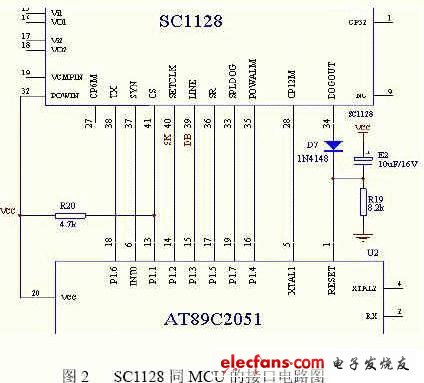introduction
Spread spectrum technology refers to a technology that uses a large bandwidth (compared to the signal bandwidth) to transmit information. In order to spread the spectrum of the transmitted signal, different technologies can be used to process the transmitted information, resulting in different types of spread spectrum modulation. Common types of spread spectrum are: direct sequence (DS), frequency hopping (FH), time hopping (TH), and chirp. In addition, these techniques are often used in combination to form a combined or mixed type of spread spectrum. Frequency technology, the signal transmission with this technology has formed the spread spectrum communication technology.
In many construction sites, a device with remote adjustment is required for remote operation. Taking the construction process in industrial welding as an example, the currently used remote control of the welding machine is a wired remote control, that is, a multi-core control cable is drawn from the welding machine and connected to the remote control box, and the butt welding is realized through the potentiometer and the control switch on the remote control box Specification parameter adjustment. The length of the multi-core control cable is generally 50 to 200 meters. The welder must wire and close the wire before and after each construction. Not only is the labor intensive, but also the welding site is chaotic, it is not easy to manage; on the other hand, the construction site environment is harsh, multi-core Cables are easily worn or broken, so that they cannot work properly; at the same time, too long control cables increase equipment costs.
This paper uses spread spectrum communication technology to realize the welding machine with a carrier remote controller to solve the above problems well, it uses the spread spectrum communication chip SC1128 as the core, through the control of the single chip to achieve the welding current, thrust current, welding method and other parameters Setting, display and transmission. The remote controller has no control cable, is easy to carry, and is convenient for construction site management. Parameters such as welding current and thrust current are digitally displayed, which is intuitive and easy to adjust. It can be accurate to 1 ampere. The distance between the welding machine and the remote control is still more than 200 meters. Reliable data transmission overcomes many shortcomings in the practical use of multi-core control cables, realizes fast, high-precision, flexible, and multi-functional signal transmission control, solves the unreliability problem of long-distance signal transmission, and provides Good human-computer interaction interface.
1 Interface between SC1128 and single chip microcomputer
The 28th pin of SC1128 is a half of the crystal output of the main clock of the circuit operation (its peak-to-peak value is about 4V), which is approximately a sine wave; the 32-pin voltage monitoring terminal; the 33-pin watchdog input terminal, which should be 768mS during normal operation There is a high-low potential change within the output; the 34-pin watchdog output terminal cooperates with the 33-pin, and outputs a low level when normal, otherwise it outputs a reset pulse of one-third duty cycle; 35-pin and 32-pin cooperate when the power signal When it is lower than the monitoring value, it will output a low level; when it is higher than the monitoring value, it will output a high level; pin 36 transceiver control terminal, 0 is receiving, 1 is transmitting; pin 37 generates a synchronization pulse signal after the synchronization of transmission and reception, The frequency changes with the change of the working main clock and the cycle; pin 38 is the output data for sending and receiving; pin 39 is the input and output terminal for setting data and status; pin 40 is the synchronous setting clock input terminal; pin 41 is the chip selection input terminal .
Data sending and receiving process:
When transmitting, the MCU sets the SR terminal (pin 36) high, the 1128 chip sends a synchronization header (pin 37), and the MCU sends data synchronously through the TX terminal (pin 38).
When receiving, the MCU sets the SR terminal (pin 36) low. If the 1128 chip receives data, it generates a sync header and sends the data to the MCU synchronously via the TX terminal (pin 38).
2 Carrier remote control design
The structure and instruction function of the single-chip microcomputer are designed according to the requirements of industrial control, with small size, light weight, low price and strong function; and most of the data is transmitted inside the single-chip microcomputer, with fast running speed, strong anti-interference ability and high reliability. With the development of microprocessor technology, the speed of single chip microcomputer is getting faster and faster, and its function is getting stronger and stronger [4]. Combined with the characteristics of the spread spectrum communication chip SC1128, the data processing capability, logic judgment capability and programmable characteristics of the single chip microcomputer are fully utilized, and combined with the software design, various requirements of the carrier remote controller can be completed.

Portable Energy Storage,energy storage companies,energy storage examples,potential energy storage,portable energy source
Langrui Energy (Shenzhen) Co.,Ltd , https://www.langruibattery.com